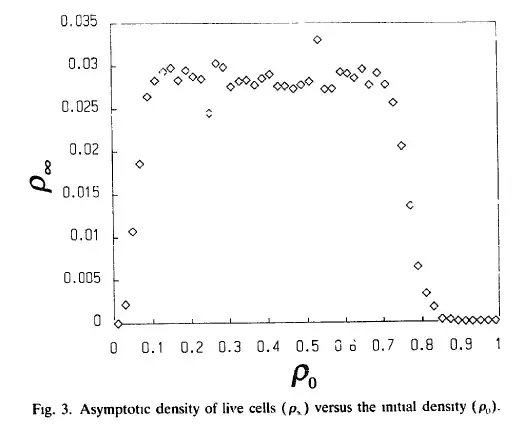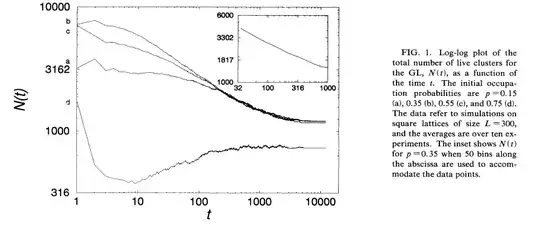What is the behavior of Conway's game of life when the initial position is random? -- We can ask this question on an infinite grid or on an $n$ by $n$ table (planar or on a torus). Specifically suppose that to start with every cell is alive with probability $p$ and these probabilities are statistically independent. This question was motivated by a recent talk by Béla Bollobás on bootstrap percolation.
Many thanks for all the answers. A related question that I thought about is what is the situation for "noisy" versions of Conway's game of life? For example if in each round a live cell dies with probability $t$ and a dead cell gets life with probability $s$ and both $t$ and $s$ are small numbers and all these probabilities are independent.
Another example is to consider the following probabilistic variant of the rule of the game itself ($t$ is a small real number):
Any live cell with fewer than two live neighbours dies with probability $1−t$.
Any live cell with two or three live neighbours lives with probability $1−t$ on to the next generation.
Any live cell with more than three live neighbours dies with probability $1−t$.
Any dead cell with exactly three live neighbours becomes a live cell with probability $1−t$.
Following some comments below I asked about the computational power of such a noisy version over here.
Update: Related question Is there any superstable configuration in the game of life?


so whatever that probability is then it'll be small< Let's say about $1−(1−(p^{20})(1−p)^{180})^{n^2/200}$. (I was too lazy to count the cells but you get the idea) Now here is the difference between a mathematician and a normal person. The mathematician believes that it is 1 and the normal person that it is 0. All existing computers are normal people, which makes it extremely hard to use them to do mathematics of this type...
– fedja Jun 01 '13 at 00:23